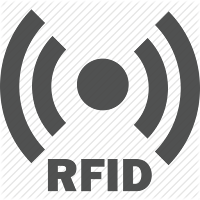Software Testing Methods
White Box Vs Black Box Testing
Black box is appropriate at all levels, but dominates higher levels of testing. White box is used predominately at lower levels to compliment black box.
White box Testing
It examines the basic programming structure. It verifies that the software design is valid or not. In this, software tester has the full knowledge about how the software works, and the tester gets full rights to interact with the scripts. This is also called Structural Testing or Glass Box Testing.
In this type of testing, all the statements and conditions are executed at least once. This technique is usually used by the development team.
White Box Testing Techniques
Following are the various White Box testing techniques:
1. Statement Coverage : In this technique, each and every statement is executed at least once.
2. Decision Coverage : In this technique, all the decision statements are executed at least once.
3. Condition Coverage : In this technique, all decision statements as well as possible outcome are executed at least once.
4. Multiple Condition coverage : This technique invokes each point of entry at least once.
Black Box Testing
Black box testing methods focus on the functional requirement of the software. It finds incorrect or missing functions, errors in data structures, performance errors, and initialization and termination errors. In this testing, we test the correctness of the functionality with the help of input and outputs. Tester doesn’t have the knowledge of the software code.
Black Box Testing Techniques
Following are the various Black Box testing techniques:
Equivalent Partitioning
Following are the activities involved in Equivalent Partitioning technique:
1. For each piece of specification, one or more equivalence classes are generated.
The classes are labelled as valid or invalid.
2. One test case is generated for each invalid class.
3. A test case that covers as many valid classes as possible is generated.
For example, 100 to 1000 <100 = -ve > 1000 =-ve 100 to 1000 = +ve
Boundary Value Analysis
Test cases are generated for the boundary values. Minimum value, minimum value+1, minimum value-1 Maximum value, maximum value+1, maximum value-1,
For example, 100 to 1000 Low b boundary = 99(-ve) and 101(+ve) On the boundary =100 to 1000 (+ve) Upper boundary =999 (+ve) and 1001 (-ve)
Error Guessing
Test cases are generated against the specification.
Grey Box Testing
This is the combination of both White Box and Black Box testing. Tester must have knowledge of both the internal and external knowledge of any function. Grey Box testing is especially important with web and Internet applications, as Internet is built around loosely integrated components that connect through relatively well-defined interfaces.
Incremental Testing
It involves adding unit tested programs to a give module one-by-one testing for each result and combination. Two types of Incremental Testing are as follows:
Top down approach : Testing takes place from top to bottom, following the control flow or architectural structure (e.g. starting from the GUI or main menu). Components or systems are substituted by stubs.
Bottom up approach : Testing takes place from the bottom of the control flow upwards. Components or systems are substituted by drivers.




Thank you 😊
ReplyDelete